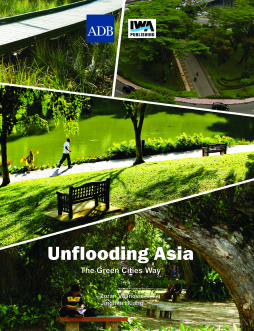
Additional Information
Book Details
Abstract
A continuing increase in disasters triggered by floods occurs almost daily even though our technological capabilities have grown rapidly and global economic growth per capita has doubled. This paradoxical situation proves that our earlier ways of thinking are inadequate and that we must shift our way of thinking and working. It has become obvious that most flood-related disasters, although commonly referred to as natural disasters, are not the result of nature-related processes alone. Some of the early efforts in dealing with floods and flood-related disasters were only concerned with the construction of engineering structures (e.g., levees, floodwalls, dams, embankments, storage basins, diversions, etc.) without significant consideration of aspects which are nowadays regarded as equally important, if not more important.
There is a great deal of natural, social and technological interactions that shape the vulnerability to floods. Realizing that flood risk can hardly ever be completely eliminated, the traditional 'flood defence' culture has been replaced with the culture of learning how to live under flood risk and how to better respond to it. This renders purely engineering solutions inadequate. Can the threats of more flood-related disasters provide an impetus to shift our mind-set towards an approach that favours not only sound technological innovations but one that also addresses the social, cultural, and wider ecological aspects of dealing with floods?
In this illustrated book, the Asian Development Bank (ADB) seeks to introduce a holistic thinking in dealing with urban floods by adopting the green cities development approach. Green cities development is a holistic approach which promotes multipurpose (or multifunctional) solutions that are not only technologically and economically efficient, but which are also ecologically sustainable and socially just.
Authors: Zoran Vojinovic, UNESCO-IHE Institute for Water Education, Delft, The Netherlands and Jingmin Huang, Senior Urban Development Specialist, Regional and Sustainable Development Department, Asian Development Bank
Table of Contents
| Section Title | Page | Action | Price |
|---|---|---|---|
| Cover | Cover | ||
| Contents | v | ||
| Flooding in Asia | 2 | ||
| Types of Floods in Urban Areas | 11 | ||
| Flooding in urban areas can be one or a combination of different types according to causes | 11 | ||
| Metro Manila | 15 | ||
| Bangkok | 21 | ||
| Beijing | 27 | ||
| The Green Cities Way of Managing Floods in Urban Areas | 34 | ||
| Example of Holistic Planning for Green Cities Development | 41 | ||
| Multifunctionality should be sought in all types of measures (irrespective if they are classified as structural or non-structural) when and where possible, depending on the type of floods being addressed. | 49 | ||
| Structural Measures | 49 | ||
| Urban drainage (major and minor) | 49 | ||
| River and Coastal Protection Measures | 50 | ||
| Floodproofing | 51 | ||
| Soft Structures | 52 | ||
| Nonstructural Measures | 55 | ||
| Land Use Control and Regulation | 55 | ||
| Disaster Preparedness, Emergency Management, and Early Warning Systems | 56 | ||
| Financial Preparedness | 57 | ||
| Example of Holistic Flood Management in Green Cities | 59 | ||
| Learning from International Best Practices | 62 | ||
| Reopening Rivers in a Highly Urbanized Area | 63 | ||
| Holistic Planning for Flood Resilience | 64 | ||
| Holistic Rainwater Management | 65 | ||
| Multipurpose Areas for Excess Flow | 66 | ||
| Implementing Green Cities | 68 | ||
| Beijing’s Urban Stormwater Management | 69 | ||
| Phase I: Direct stormwater discharge | 69 | ||
| Phase II: Direct stormwater discharge and utilization | 69 | ||
| Phase III: Intergrated stormwater mangement | 70 | ||
| Structural Measures | 71 | ||
| Stormwater discharge system | 71 | ||
| Urban flood control system | 71 | ||
| Urban waterlogging control facility | 71 | ||
| Urban stormwater utilization facility | 71 | ||
| Non-structural measures | 72 | ||
| Institutional arrangements | 72 | ||
| Emergency response | 72 | ||
| Stormwater management laws, policies, and regulations | 72 | ||
| Low Impact Development in Beijing | 73 | ||
| References | 74 | ||
| Credits | 75 | ||
| Photos Credits | 75 |
